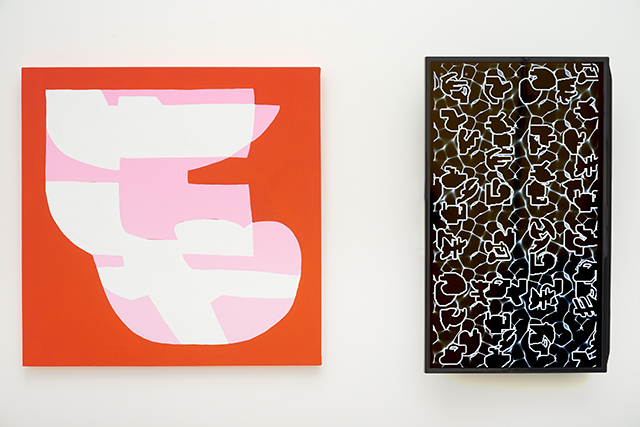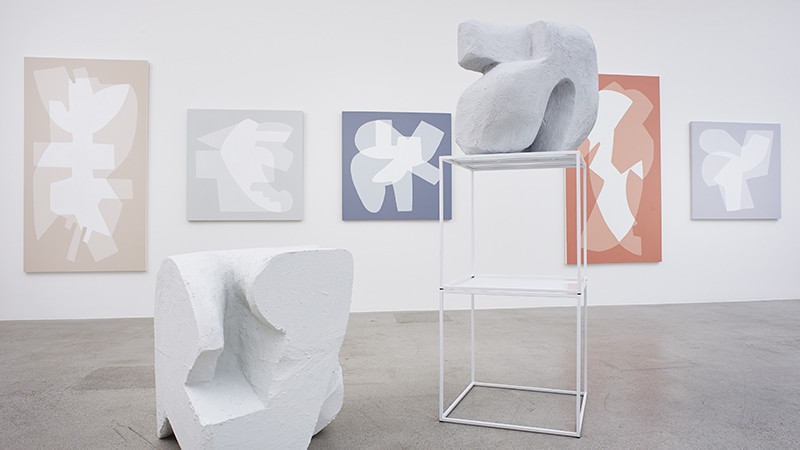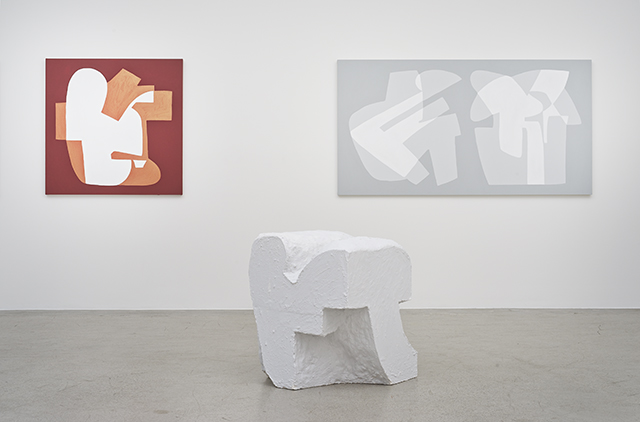The very first work on the image list for Hayal Pozanti’s solo exhibition at Jessica Silverman Gallery, 10, is both a title and a statistic. In Harper’s Index-like fashion, the image list details the number’s sobering source: “minimum number of stay days required by an inpatient internet-addiction program at a Pennsylvania hospital.”
Each work in Ciphers is a direct translation of data into a glyph alphabet of Pozanti’s own creation. With a limited repertoire of 31 “characters,” Pozanti uses the glyphs to create layered abstractions. A painting titled 36 contains the symbols for 3 and 6. These subdued works on canvas are accompanied by sculptures modeled after the shape’s intersections and custom CSS animations of a Windings-like language in motion.
Pozanti’s soothing palette belies the disturbing statistics at the root of her works. Purposefully made in earthy, non-digital tones (think warm grays instead of icy blues), her paintings are full of soft curves and hand-rendered edges. The source statistics pertain mostly to the influence of technology on our social and private lives: self-censorship, limited journalistic freedom, online stalking, surveillance and hacking threats.

Some of the information is shocking: one in ten people check their phones during sex. (Appropriately, 1/10 is painted in fluorescent pink and hot red acrylic.) Some of the information is, sadly, unsurprising: two thirds of those employed in computer occupations in the US are men. (2/3 stretches 6 feet 3 inches tall, a looming, human-sized canvas covered in bland hues of greenish beige.)
The four sculptures in Ciphers are made from blocks of painted foam, carved to reference the intersections of overlapping shapes in the surrounding paintings. The titles are snippets of tech jargon, things you might overhear as a group of start-up employees walk past your office window, like data-positive and chief privacy officer.



